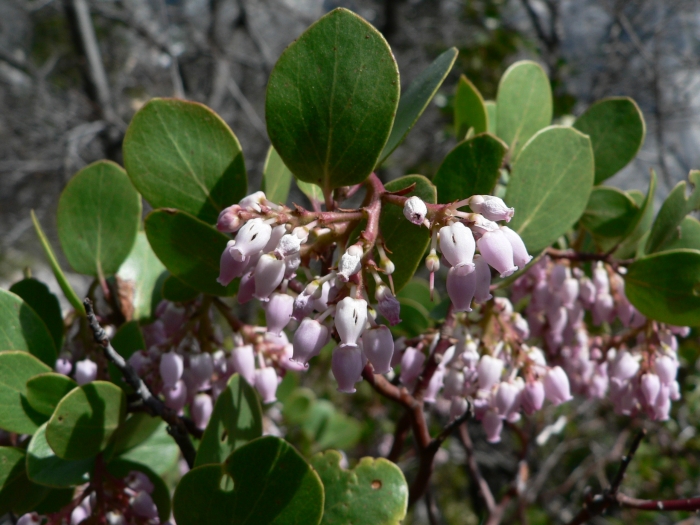Greenleaf Manzanita
(Arctostaphylos patula)
Greenleaf Manzanita (Arctostaphylos patula)
/
/

Walter Siegmund
CC BY 2.5










































































Estimated Native Range
Summary
Greenleaf Manzanita is valued for its drought tolerance, making it suitable for xeriscaping and native plant gardens. It is also used for erosion control on slopes due to its rooting branches. In cultivation, it requires minimal maintenance once established, preferring full sun and well-drained soils. It is adaptable to various soil types, including those with poor fertility. While it is generally pest and disease-free, it can be susceptible to root rot in poorly drained soils. Greenleaf Manzanita does not transplant well due to its sensitive root system, so it is best to plant it from containers or from seed in its permanent location.CC BY-SA 4.0
Plant Description
- Plant Type: Shrub
- Height: 3-9 feet
- Width: 3-12 feet
- Growth Rate: Slow
- Flower Color: Pink
- Flowering Season: Spring, Winter
- Leaf Retention: Evergreen
Growth Requirements
- Sun: Full Sun, Part Shade
- Water: Low, Very Low
- Drainage: Fast, Medium, Slow
Common Uses
Bee Garden, Bird Garden, Butterfly Garden, Deer Resistant, Drought Tolerant, Edible*Disclaimer: Easyscape's listed plant edibility is for informational use. Always verify the safety and proper identification of any plant before consumption., Fire Resistant, Groundcover, Hummingbird Garden, Low Maintenance, Showy Flowers, Street Planting
Natural Habitat
Native to chaparral, coniferous forests, and open woodlands of western North America, particularly in the Sierra Nevada, Cascade ranges, and coastal ranges
Other Names
Common Names: Green-Leaf Manzanita
Scientific Names: , Arctostaphylos patula, Arctostaphylos obtusifolia, Arctostaphylos pungens var. platyphylla, Arctostaphylos patula var. incarnata, Uva-ursi obtusifolia,
GBIF Accepted Name: Arctostaphylos patula Greene